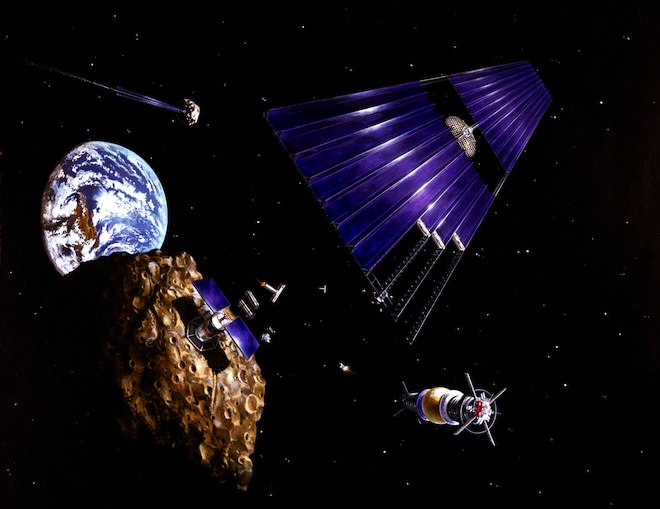
When first we heard about Planetary Resources — the mysterious space company launching tomorrow with the backing of big tech names — we had an inkling that the company was actually an asteroid mining outfit, specifically focusing on platinum mining.
Now, the company has revealed its true purpose, and yes, it’s totally focused on extracting precious resources from asteroids, including platinum. Wired’s Adam Mann had the privilege to talk with the folks behind Planetary Resources ahead of tomorrow’s launch event, and in addition to confirming its sci-fi sounding plans, he also revealed some interesting details about the mysterious company.
“The resources of Earth pale in comparison to the wealth of the solar system,” Eric Anderson, co-founder of Planetary Resources and founder of the space tourism company Space Adventures, told Wired. Anderson started the company together with Peter Diamandis, the X Prize founder who previously argued for space mining in a TED talk.
According to a press release sent out last week, they’ll be joined by former NASA Mars mission head Chris Lewicki and former astronaut and planetary scientist Tom Jones, at the launch event tomorrow. The company is notably backed by an impressive group of names, including Google’s Larry Page and Eric Schmidt, filmmaker (and explorer) James Cameron, and Ross Perot, Jr.
Planetary Resources’ mission will certainly be tough-going, but the rewards could be astronomical. According to Wired, the company “hopes to go after the platinum-group metals — which include platinum, palladium, osmium, and iridium — highly valuable commodities used in medical devices, renewable energy products, catalytic converters, and potentially in automotive fuel cells.”
As we pointed out in our story over the weekend, a relatively small asteroid is worth about “20 trillion dollars in the platinum group metal marketplace,” Diamandis has said in past talks. Moreover, in a speech just six months ago, Diamandis said he planned to finance his space activities by buying “puts” in the platinum markets, and then announcing his ambitious plans — although he may have been half-joking.
With platinum now worth around $23,000 a pound, the company could mine around $6 billion of the stuff from the top feet of a typical half-mile wide asteroid (around 130 tons). But given that the company will have to spend tens of millions simply to scope out worthwhile asteroids, I suppose we shouldn’t be surprised by the potential returns.
So where does Planetary Resources go from here? According to Wired, the company will launch two to five space-based telescopes in the next 18 to 24 months. And within five to seven years, Planetary Resources will send out a “swarm” of similar spacecraft to take a closer look at the asteroids (this alone could cost between $25 and $30 million).
The company isn’t yet revealing how it will mine, possibly refine, and deliver the ore to Earth. A video the company provided to Wired shows how robots could be used to dig up the precious minerals.
It’ll be some time before we see the results of Planetary Resources’ endeavor, and it could fail completely. But if the company even has a small chance of success, it would be worth exploring the possibilities of asteroid mining and figuring out the big problems with the process now.
We’ll be live at the company’s announcement tomorrow in Seattle, so stay tuned for more details.
Asteroid mining concept image via NASA/Denise Watt

